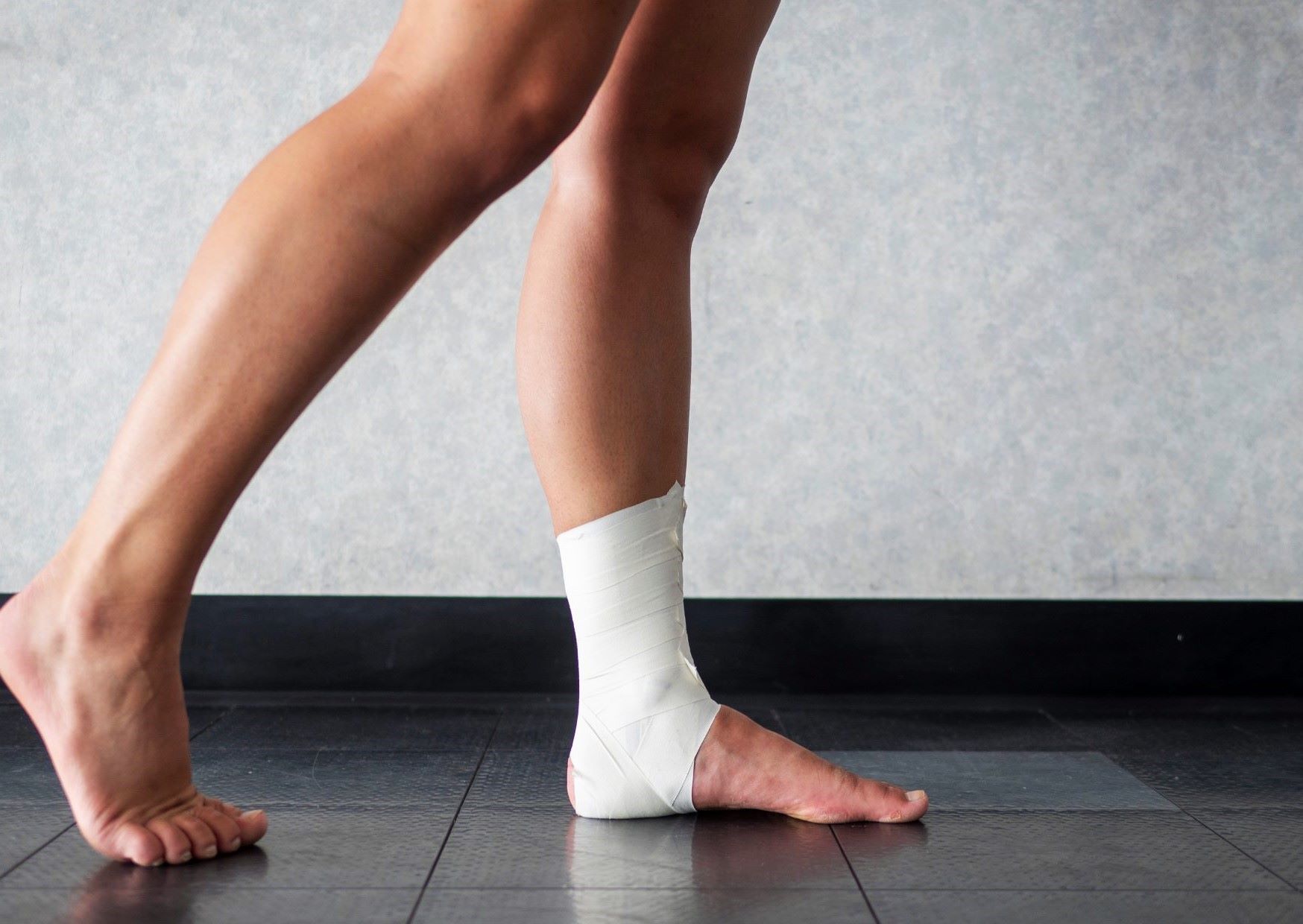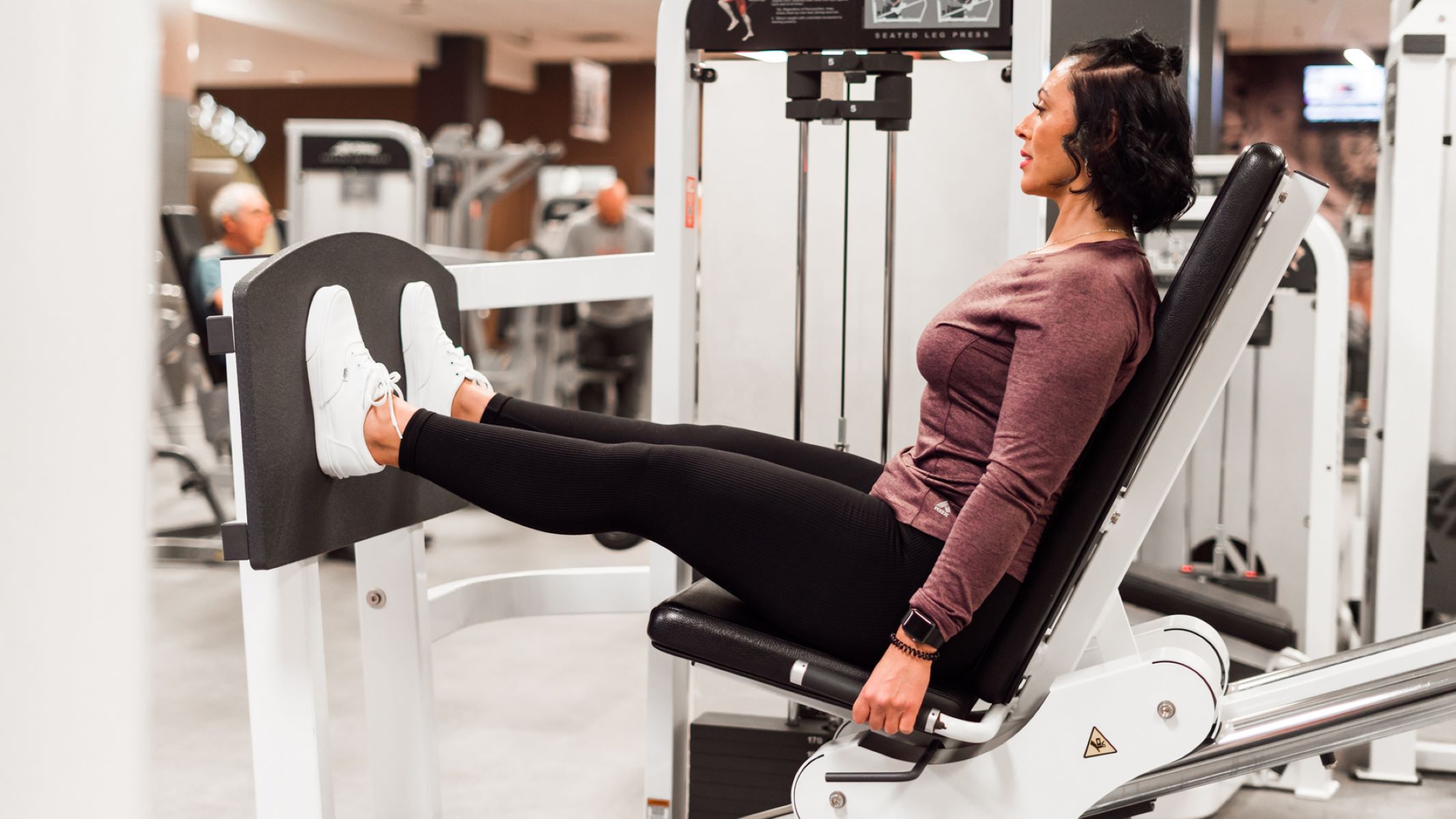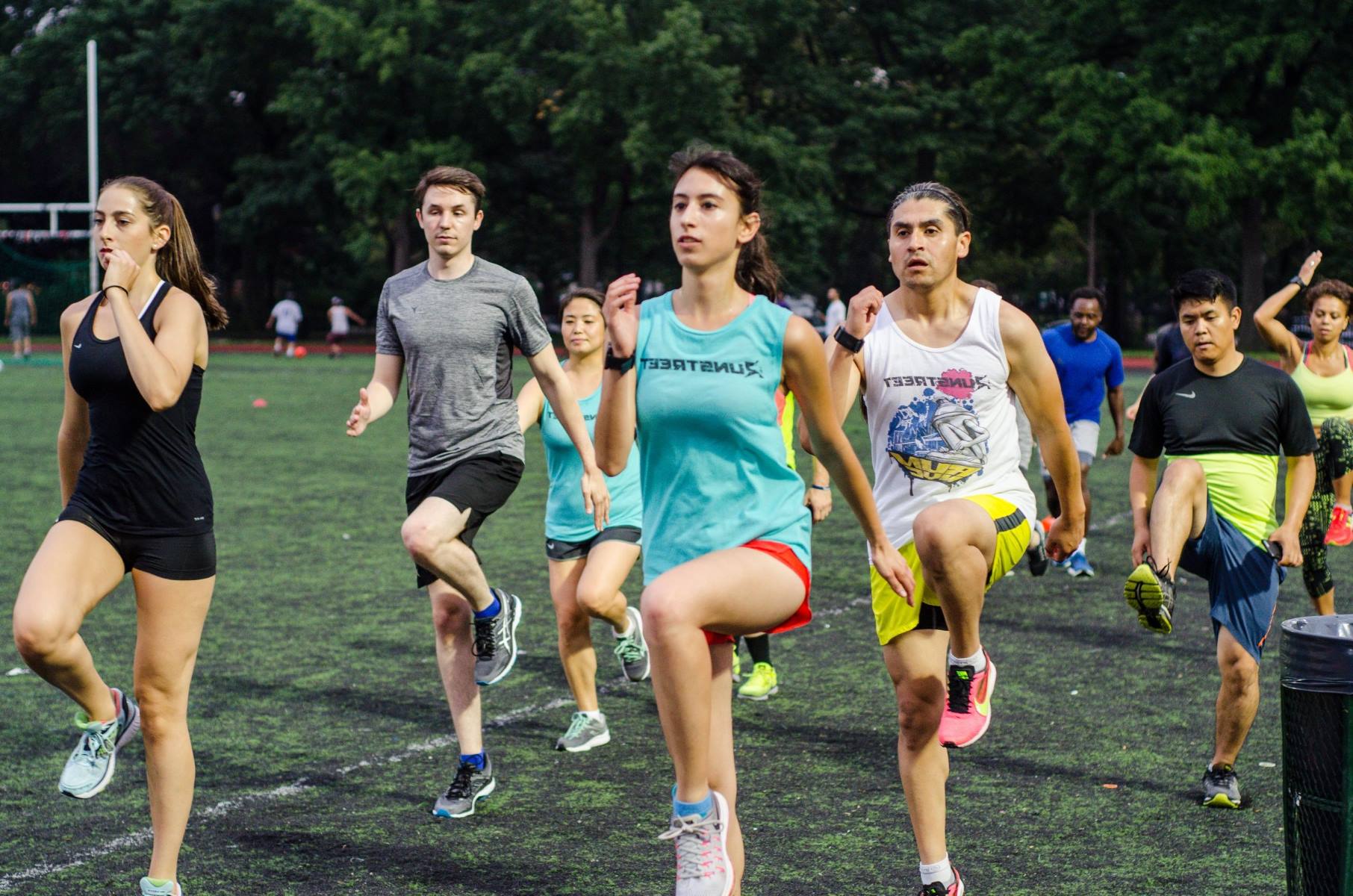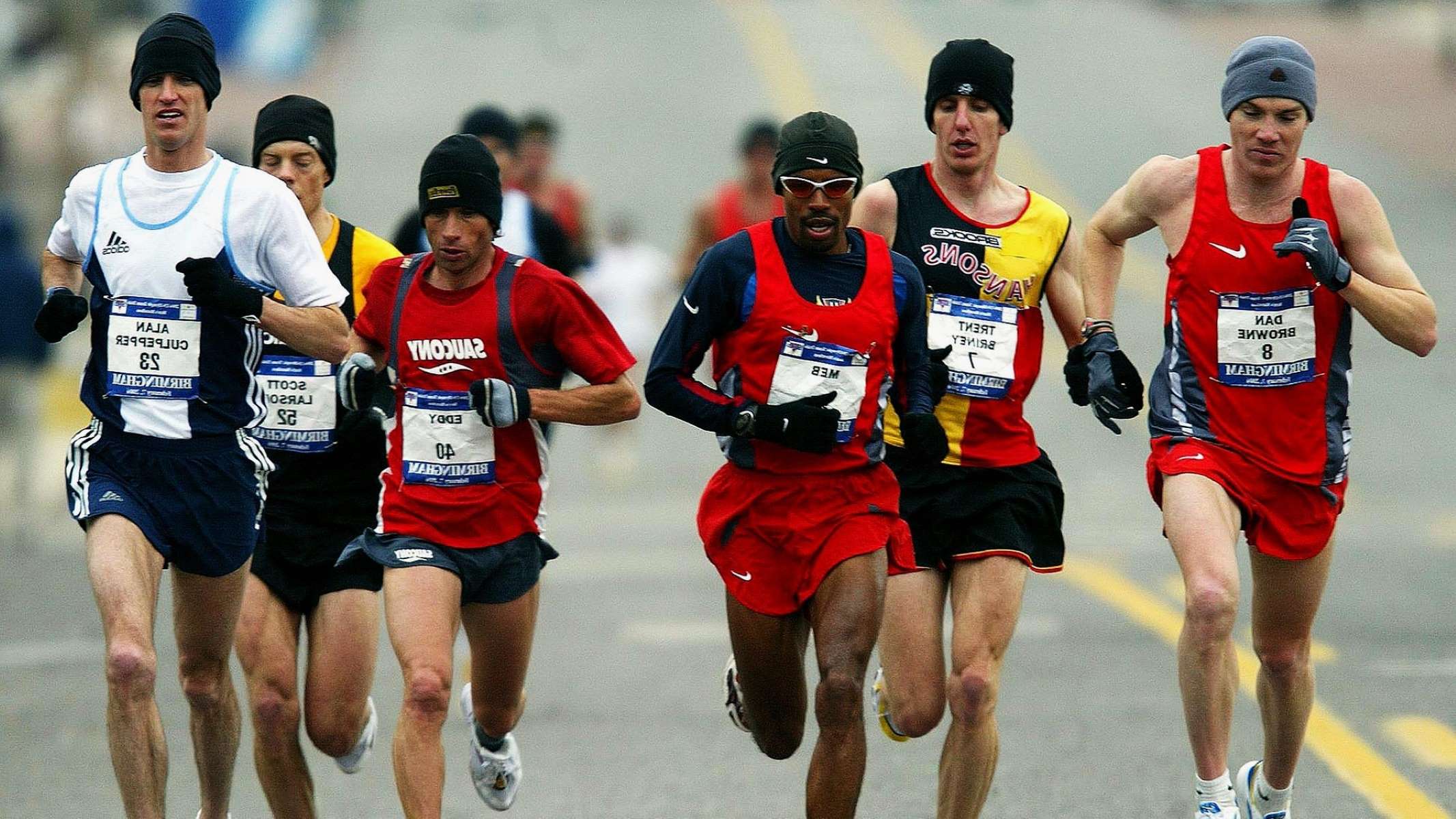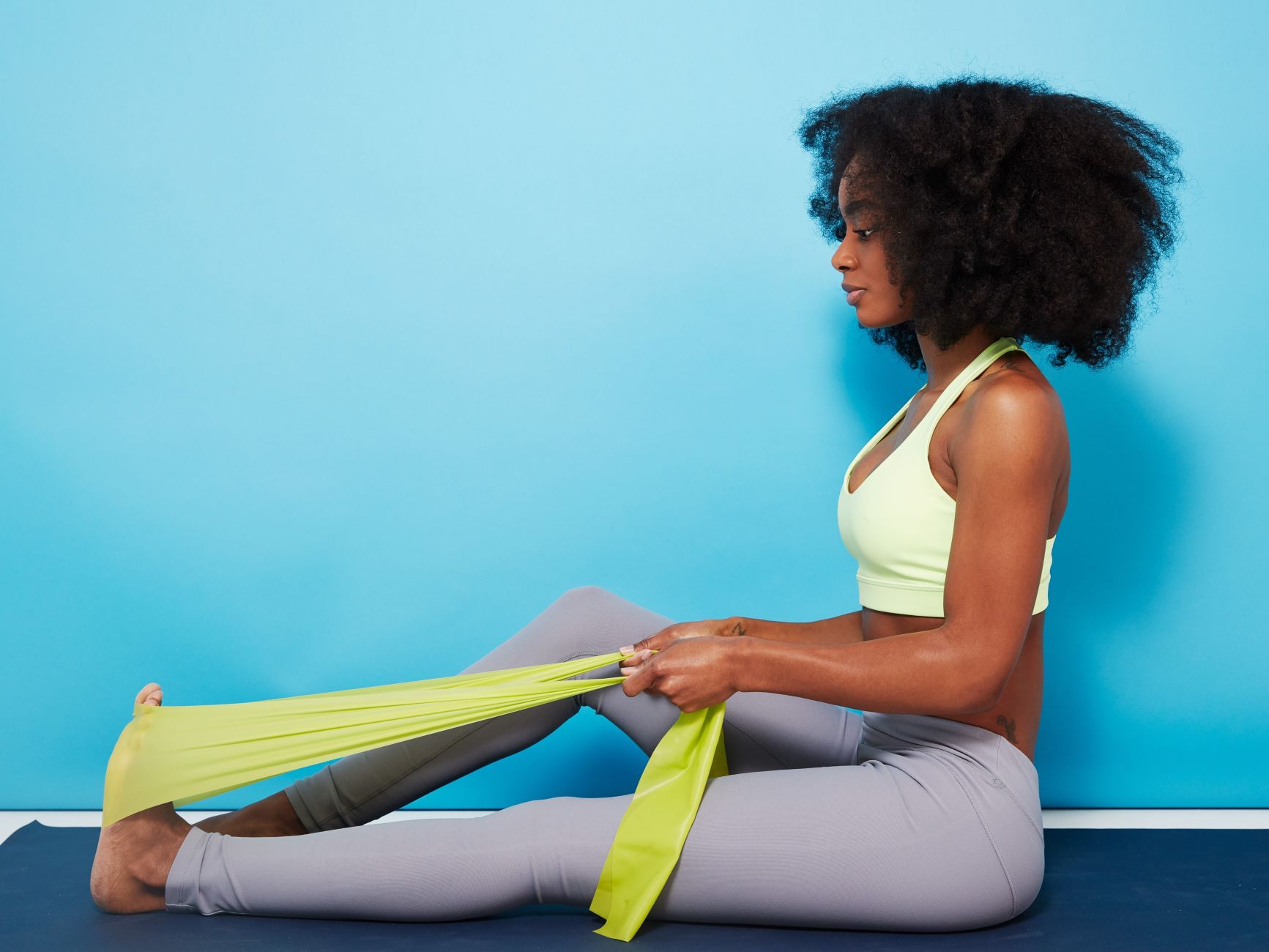Home>Health & Nutrition>Injury Prevention>10 Must-Do Stretches Before Running


Injury Prevention
10 Must-Do Stretches Before Running
Published: February 23, 2024
Prevent injuries and improve performance with these 10 essential stretches before running. Incorporate these stretches into your routine for a safer and more effective workout.
(Many of the links in this article redirect to a specific reviewed product. Your purchase of these products through affiliate links helps to generate commission for Therunningadvisor.com, at no extra cost. Learn more)
Table of Contents
Importance of Stretching Before Running
Stretching before running is a crucial component of any workout routine. It not only prepares the body for physical activity but also helps prevent injuries and enhances overall performance. By incorporating a pre-run stretching routine into your regimen, you can optimize your running experience and promote long-term physical well-being.
When you engage in running, your muscles undergo repetitive contractions and extensions, placing significant stress on the body. Without proper preparation, this can lead to muscle tightness, reduced flexibility, and an increased risk of injury. Stretching before running helps counteract these effects by loosening the muscles, increasing blood flow, and improving joint mobility.
Moreover, pre-run stretching primes the body for the physical demands of running, allowing for a smoother transition into the activity. It signals to the muscles and tendons that they are about to be engaged, thereby reducing the likelihood of strain or overexertion during the run. This proactive approach sets the stage for a more comfortable and efficient running experience.
In addition to the physical benefits, stretching before running also offers mental advantages. It provides an opportunity to center your focus, mentally prepare for the upcoming workout, and establish a mind-body connection. This mental readiness can contribute to improved performance and a more enjoyable running session.
By incorporating a pre-run stretching routine, you are investing in the long-term health and resilience of your body. It serves as a proactive measure to safeguard against potential injuries and discomfort, allowing you to pursue your running goals with confidence and reduced risk.
In summary, stretching before running is a fundamental practice that sets the stage for a successful and injury-free workout. It prepares the body physically and mentally, reduces the risk of injury, and promotes overall well-being. By making stretching a non-negotiable part of your running routine, you are prioritizing your body's health and optimizing your running experience.
Read more: Fueling Your Body Before A 10K: What To Eat
Stretching the Calves
Stretching the calves is essential for runners as it helps to improve flexibility and reduce the risk of injuries such as Achilles tendonitis and calf strains. The calves, comprised of the gastrocnemius and soleus muscles, play a pivotal role in the running motion, making it crucial to ensure they are adequately prepared for the physical demands of the activity.
One effective calf stretch is the standing calf stretch. To perform this stretch, find a wall or sturdy object to support yourself. Stand arm's length away from the wall, then place your hands on the wall at shoulder height. Step back with one leg, keeping it straight and pressing the heel into the ground. Bend the front leg while keeping the back leg straight, and lean forward to feel the stretch in the calf of the back leg. Hold this position for 30 seconds to one minute, then switch to the other leg.
Another beneficial calf stretch is the downward dog yoga pose. Begin on your hands and knees, then lift your hips toward the ceiling, straightening your legs and pressing your heels toward the ground. This pose effectively stretches the calves while also engaging the hamstrings and lower back.
It's important to perform these stretches with proper form and control, avoiding any bouncing or jerking movements that could lead to injury. By incorporating calf stretches into your pre-run routine, you can enhance the flexibility and range of motion in your calves, ultimately contributing to improved running performance and reduced risk of injury.
Incorporating calf stretches into your pre-run routine is a proactive step toward maintaining healthy and resilient calf muscles. By dedicating time to stretch and prepare the calves before running, you are actively investing in the longevity of your running journey. This simple yet impactful practice can make a significant difference in your overall running experience, allowing you to pursue your running goals with confidence and reduced risk of calf-related discomfort or injuries.
Stretching the Hamstrings
Stretching the hamstrings is a vital component of a pre-run routine, as it contributes to improved flexibility, reduced muscle tension, and enhanced running performance. The hamstrings, consisting of three muscles located at the back of the thigh, play a crucial role in the running motion, making it essential to ensure they are adequately prepared for the physical demands of the activity.
One effective hamstring stretch is the standing hamstring stretch. To perform this stretch, stand with your feet hip-width apart and gently hinge at the hips to reach toward your toes. Keep your back straight and avoid rounding your spine to maintain proper form. You should feel a gentle stretch in the back of your thighs. Hold this position for 30 seconds to one minute, allowing the muscles to gradually relax and elongate.
Another beneficial hamstring stretch is the seated hamstring stretch. Sit on the ground with one leg extended straight in front of you and the other leg bent, with the sole of the foot resting against the inner thigh of the extended leg. Lean forward from your hips, reaching toward your toes while keeping your back straight. Hold this position for 30 seconds to one minute, then switch to the other leg.
It's important to perform these stretches with controlled movements and focus on deep breathing to promote relaxation and release tension in the hamstrings. By incorporating hamstring stretches into your pre-run routine, you can enhance the flexibility and range of motion in your hamstrings, ultimately contributing to improved running performance and reduced risk of muscle strain or injury.
Incorporating hamstring stretches into your pre-run routine is a proactive step toward maintaining healthy and resilient hamstring muscles. By dedicating time to stretch and prepare the hamstrings before running, you are actively investing in the longevity of your running journey. This simple yet impactful practice can make a significant difference in your overall running experience, allowing you to pursue your running goals with confidence and reduced risk of hamstring-related discomfort or injuries.
Stretching the Quadriceps
Stretching the quadriceps is a crucial aspect of a comprehensive pre-run routine, as it plays a pivotal role in promoting flexibility, reducing muscle tightness, and enhancing running performance. The quadriceps, a group of four muscles located at the front of the thigh, are actively engaged during running, making it essential to prepare and condition them for the physical demands of the activity.
One highly effective quadriceps stretch is the standing quadriceps stretch. To perform this stretch, stand tall with your feet hip-width apart. Gently bend one knee and bring your foot toward your glutes, grasping the ankle or foot with your hand. Keep your knees close together and your torso upright. Engage your core for stability and gently press your hips forward to intensify the stretch in the front of the thigh. Hold this position for 30 seconds to one minute, then switch to the other leg.
Another beneficial quadriceps stretch is the kneeling quadriceps stretch. Begin by kneeling on one knee, ensuring that the other leg is bent at a 90-degree angle in front of you. Gently lean forward, placing your hands on the ground for support, and shift your weight onto the front leg. You should feel a deep stretch in the quadriceps of the kneeling leg. Hold this position for 30 seconds to one minute, then switch to the other leg.
It's important to perform these stretches with controlled movements and focus on maintaining proper alignment and posture. By incorporating quadriceps stretches into your pre-run routine, you can enhance the flexibility and range of motion in your quadriceps, ultimately contributing to improved running performance and reduced risk of muscle strain or injury.
Incorporating quadriceps stretches into your pre-run routine is a proactive step toward maintaining healthy and resilient quadriceps muscles. By dedicating time to stretch and prepare the quadriceps before running, you are actively investing in the longevity of your running journey. This simple yet impactful practice can make a significant difference in your overall running experience, allowing you to pursue your running goals with confidence and reduced risk of quadriceps-related discomfort or injuries.
Stretching the Hip Flexors
Stretching the hip flexors is a crucial element of a comprehensive pre-run routine, as it contributes to improved flexibility, reduced muscle tension, and enhanced running performance. The hip flexors, a group of muscles located at the front of the hip and upper thigh, play a pivotal role in the running motion, making it essential to ensure they are adequately prepared for the physical demands of the activity.
One highly effective hip flexor stretch is the kneeling hip flexor stretch. To perform this stretch, start in a kneeling position with one knee on the ground and the other leg bent at a 90-degree angle in front of you. Gently shift your weight forward, maintaining an upright torso, to feel a deep stretch in the hip flexor of the kneeling leg. Engage your core for stability and ensure that the movement is controlled and gradual. Hold this position for 30 seconds to one minute, allowing the muscles to gradually relax and elongate.
Another beneficial hip flexor stretch is the standing hip flexor stretch. Begin by standing tall with your feet hip-width apart. Take a step back with one leg and bend the front knee, ensuring that the back leg remains straight. Gently tilt your pelvis forward while keeping your torso upright, feeling a stretch in the hip flexor of the back leg. Hold this position for 30 seconds to one minute, then switch to the other leg.
It's important to perform these stretches with proper form and control, focusing on deep breathing to promote relaxation and release tension in the hip flexors. By incorporating hip flexor stretches into your pre-run routine, you can enhance the flexibility and range of motion in your hip flexors, ultimately contributing to improved running performance and reduced risk of muscle strain or injury.
Incorporating hip flexor stretches into your pre-run routine is a proactive step toward maintaining healthy and resilient hip flexor muscles. By dedicating time to stretch and prepare the hip flexors before running, you are actively investing in the longevity of your running journey. This simple yet impactful practice can make a significant difference in your overall running experience, allowing you to pursue your running goals with confidence and reduced risk of hip flexor-related discomfort or injuries.
Read more: Must-Have Vegetables For Runners
Stretching the Glutes
Stretching the glutes is a fundamental aspect of a pre-run routine, serving as a key preparatory step to optimize running performance and reduce the risk of discomfort or injury. The glutes, comprising the gluteus maximus, gluteus medius, and gluteus minimus muscles, play a crucial role in providing stability, power, and propulsion during running. Therefore, ensuring that these muscles are adequately stretched and primed for activity is essential for a successful and injury-free running experience.
One highly effective glute stretch is the figure-four stretch. To perform this stretch, lie on your back with both knees bent and feet flat on the ground. Cross one ankle over the opposite knee, creating a "figure-four" shape with your legs. Gently lift the lower leg off the ground and thread your hands through the opening, clasping behind the thigh of the supporting leg. Pull the legs toward your chest, feeling a deep stretch in the glute muscles of the crossed leg. Hold this position for 30 seconds to one minute, then switch to the other leg.
Another beneficial glute stretch is the seated spinal twist. Begin by sitting on the ground with both legs extended in front of you. Bend one knee and cross the foot over the opposite leg, placing it flat on the ground. Gently twist your torso toward the bent knee, using the opposite arm to hug the knee and deepen the stretch. This pose effectively targets the glutes and promotes flexibility in the hip area. Hold this position for 30 seconds to one minute, then switch to the other side.
It's important to perform these stretches with controlled movements and focus on deep breathing to promote relaxation and release tension in the glute muscles. By incorporating glute stretches into your pre-run routine, you can enhance the flexibility and range of motion in your glutes, ultimately contributing to improved running performance and reduced risk of muscle strain or injury.
Incorporating glute stretches into your pre-run routine is a proactive step toward maintaining healthy and resilient glute muscles. By dedicating time to stretch and prepare the glutes before running, you are actively investing in the longevity of your running journey. This simple yet impactful practice can make a significant difference in your overall running experience, allowing you to pursue your running goals with confidence and reduced risk of glute-related discomfort or injuries.
Stretching the IT Band
Stretching the iliotibial (IT) band is a crucial component of a pre-run routine, as it plays a significant role in maintaining optimal lower body function and reducing the risk of discomfort or injury. The IT band, a fibrous band of tissue that runs along the outside of the thigh, connects the hip to the knee and is actively engaged during running. Therefore, ensuring that the IT band is adequately stretched and prepared for physical activity is essential for a successful and injury-free running experience.
One highly effective IT band stretch is the standing IT band stretch. To perform this stretch, stand with your feet hip-width apart and cross one leg behind the other. Gently lean to the side opposite to the crossed leg, reaching your hand overhead to intensify the stretch along the outer thigh and hip. You should feel a deep stretch along the length of the IT band. Hold this position for 30 seconds to one minute, then switch to the other side.
Another beneficial IT band stretch is the lying IT band stretch. Begin by lying on your side with the bottom leg extended and the top leg bent at the knee for stability. Gently lift your upper foot and place it behind you, allowing the knee to point toward the ground. You should feel a targeted stretch along the outer thigh and hip area. Hold this position for 30 seconds to one minute, then switch to the other side.
It's important to perform these stretches with controlled movements and focus on deep breathing to promote relaxation and release tension in the IT band. By incorporating IT band stretches into your pre-run routine, you can enhance the flexibility and range of motion in your IT band, ultimately contributing to improved running performance and reduced risk of discomfort or injury.
Incorporating IT band stretches into your pre-run routine is a proactive step toward maintaining healthy and resilient IT band muscles. By dedicating time to stretch and prepare the IT band before running, you are actively investing in the longevity of your running journey. This simple yet impactful practice can make a significant difference in your overall running experience, allowing you to pursue your running goals with confidence and reduced risk of IT band-related discomfort or injuries.
Stretching the Lower Back
Stretching the lower back is a crucial element of a comprehensive pre-run routine, as it contributes to improved flexibility, reduced muscle tension, and enhanced running performance. The lower back, also known as the lumbar region, plays a pivotal role in providing stability and support during running, making it essential to ensure that this area is adequately prepared for the physical demands of the activity.
One highly effective lower back stretch is the seated forward fold. To perform this stretch, sit on the ground with your legs extended in front of you. Gently hinge at the hips and reach forward toward your toes, keeping your back straight and avoiding any rounding of the spine. You should feel a gentle stretch along the entire length of the lower back and the back of the thighs. Hold this position for 30 seconds to one minute, allowing the muscles to gradually relax and elongate.
Another beneficial lower back stretch is the supine knee-to-chest stretch. Begin by lying on your back with your legs extended. Bend one knee and bring it toward your chest, clasping your hands around the shin or the back of the thigh. Gently pull the knee closer to your chest, feeling a targeted stretch in the lower back and gluteal muscles. Hold this position for 30 seconds to one minute, then switch to the other leg.
It's important to perform these stretches with controlled movements and focus on deep breathing to promote relaxation and release tension in the lower back. By incorporating lower back stretches into your pre-run routine, you can enhance the flexibility and range of motion in your lumbar region, ultimately contributing to improved running performance and reduced risk of discomfort or injury.
Incorporating lower back stretches into your pre-run routine is a proactive step toward maintaining a healthy and resilient lower back. By dedicating time to stretch and prepare the lower back before running, you are actively investing in the longevity of your running journey. This simple yet impactful practice can make a significant difference in your overall running experience, allowing you to pursue your running goals with confidence and reduced risk of lower back-related discomfort or injuries.
Stretching the Shoulders and Arms
Stretching the shoulders and arms is a vital component of a comprehensive pre-run routine, as it contributes to improved upper body flexibility, reduced muscle tension, and enhanced running performance. While running primarily engages the lower body, maintaining flexibility and mobility in the upper body is equally important for overall balance and posture during the activity.
One highly effective shoulder and arm stretch is the overhead triceps stretch. To perform this stretch, raise one arm overhead and bend the elbow, allowing the hand to reach toward the opposite shoulder blade. With the opposite hand, gently press on the bent elbow to deepen the stretch in the triceps and the back of the arm. Hold this position for 30 seconds to one minute, then switch to the other arm. This stretch effectively targets the triceps and promotes flexibility in the arms, which can contribute to a more relaxed and efficient arm swing while running.
Another beneficial shoulder and arm stretch is the across-the-body shoulder stretch. Begin by extending one arm across the front of your body at shoulder height. Use the opposite hand to gently press the extended arm toward your chest, feeling a stretch in the shoulder and upper back. Hold this position for 30 seconds to one minute, then switch to the other arm. This stretch helps release tension in the shoulders and upper back, promoting a greater range of motion and reducing the risk of discomfort during running.
It's important to perform these stretches with controlled movements and focus on deep breathing to promote relaxation and release tension in the shoulders and arms. By incorporating shoulder and arm stretches into your pre-run routine, you can enhance the flexibility and range of motion in your upper body, ultimately contributing to improved running performance and reduced risk of muscle strain or injury.
Incorporating shoulder and arm stretches into your pre-run routine is a proactive step toward maintaining healthy and resilient upper body muscles. By dedicating time to stretch and prepare the shoulders and arms before running, you are actively investing in the longevity of your running journey. This simple yet impactful practice can make a significant difference in your overall running experience, allowing you to pursue your running goals with confidence and reduced risk of upper body-related discomfort or injuries.
Stretching the Chest and Upper Body
Stretching the chest and upper body is a crucial component of a comprehensive pre-run routine, as it contributes to improved posture, enhanced breathing capacity, and reduced muscle tension. While running predominantly engages the lower body, maintaining flexibility and mobility in the chest, shoulders, and upper back is essential for overall balance and efficient arm movement during the activity.
One highly effective chest and upper body stretch is the doorway stretch. To perform this stretch, stand in a doorway with your arms positioned at a 90-degree angle against the door frame. Gently lean forward, allowing the chest to open and the shoulders to stretch. This position effectively targets the pectoral muscles and promotes flexibility in the chest and shoulders, which can contribute to improved posture and breathing mechanics during running.
Another beneficial upper body stretch is the seated twist. Begin by sitting on the ground with your legs extended in front of you. Cross one leg over the other and gently twist your torso toward the crossed leg, using the opposite arm to hug the knee and deepen the stretch. This pose effectively targets the chest, shoulders, and upper back, promoting flexibility and mobility in the upper body.
It's important to perform these stretches with controlled movements and focus on deep breathing to promote relaxation and release tension in the chest and upper body. By incorporating chest and upper body stretches into your pre-run routine, you can enhance the flexibility and range of motion in your upper body, ultimately contributing to improved running performance and reduced risk of discomfort or injury.
Incorporating chest and upper body stretches into your pre-run routine is a proactive step toward maintaining healthy and resilient upper body muscles. By dedicating time to stretch and prepare the chest and upper body before running, you are actively investing in the longevity of your running journey. This simple yet impactful practice can make a significant difference in your overall running experience, allowing you to pursue your running goals with confidence and reduced risk of upper body-related discomfort or injuries.





